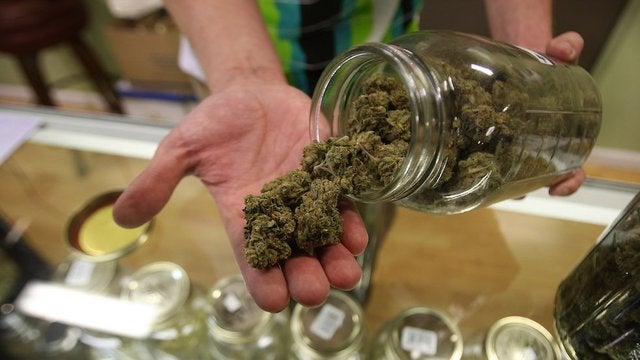
By Diana H. Fishbein, Elizabeth Long and Sharon Kingston, opinion contributor for The Hill
Misconceptions regarding marijuana distort perceptions about its hazards and benefits. While marijuana remains on schedule 1 of the federal Controlled Substances Act, a number of state-level laws are changing the policy landscape. However, these changes are not always informed by decades of scientific knowledge.
Incorporating existing science into the policy narrative promises to provide critical opportunities to make course corrections and avoid policies that are neither too restrictive nor permissive.
A critical issue in marijuana policymaking is whether marijuana is addictive. Extensive scientific research has determined that marijuana does, in fact, have dependence-producing properties, activating several neurochemical "reward" systems of the brain, including the opioid system). Importantly, using marijuana also significantly increases risk of using other substances and developing a substance use disorder (SUD)).
Teenagers are at heightened risk for experimenting with drugs, and the earlier they use, the greater the risk for eventual dependence. Marijuana’s regular use during adolescence leads to dependence at higher rates than alcohol and, once dependent, adolescents experience a wide range of adverse effects.
The brain is rapidly maturing during adolescence making it vulnerable to environmental influences that can alter the course of brain development. Consequently, chronic and/or heavy marijuana use in adolescence has been associated with a number of developmental delays. For example, teens who use marijuana heavily often show deficits in a range of cognitive functions (e.g., memory, reasoning, attention, concentration, decision-making).
Also, marijuana use can exert negative impacts on mental health, by triggering psychotic disorders like schizophrenia in susceptible individuals, and worsening other mental health problems (e.g., bipolar disorder, substance abuse, social anxiety). We also see an increased incidence of suicidal ideation, attempts and completion.
Importantly, even regular use (not only chronic/heavy) may disrupt healthy neurodevelopment. And the earlier marijuana use begins, the worse the outcomes the worse the outcomes.
Heavy use of marijuana also affects the reproductive system, potentially stalling development of reproductive systems, leading to a lag in brain areas responsive to the male hormone, testosterone, as well as problems with sexual performance.
The real concerns for teenagers are not death from overdose but rather impediments to short and long term functioning and its potential for SUD. Yet, there is a broad lack of awareness of these consequences.
Although legislation restricts possession of marijuana by minors, recent more permissive drug laws are leading to a greater number of teens who perceive marijuana use as harmless. Decreases in perceived harm is directly associated with increased drug-taking.
Formulating policies that are consistent with scientific evidence will greatly increase their effectiveness. Several policy recommendations are offered here for consideration:
- Invest resources in delaying the age of initiation of marijuana use past the age when the brain is still under construction (~ age 25) to reduce impact on neurodevelopment. Thus, risk for SUD would decline and the cascading negative effects on health would be prevented.
- Importantly, fund and widely implement a high-quality public education campaign to inform youth, parents, adults who work with youth, and healthcare providers about the dangers of marijuana use during childhood and adolescence.
- Support screening, early detection and intervention. Focus both on at-risk youth who have not yet initiated to avert pathways to use and youth who have already begun using marijuana to avoid negative consequences including SUD.
- Update the regulatory structure to keep pace with commercialization applying uniform standards on the types of products that can be sold or marketed to the public.
- Support initiatives to reduce stigma related to SUD treatment and increase knowledge regarding marijuana’s effects, thereby encouraging young users to seek treatment.
- Invest in research and increase access to marijuana by scientists studying the impact of marijuana on risk for addiction and effects on neurodevelopment in adolescence.
Marijuana has a history replete with ill-informed notions about its effects. Fortunately, recent decades have produced a substantial body of evidence on marijuana to guide our policy decisions guide our policy decisions.
Diana Fishbein, Ph.D., professor and program director, The Pennsylvania State University and co-director of the National Prevention Science Coalition (NPSC). Elizabeth Long, Ph.D, postdoctoral scholar, Edna Bennett Pierce Prevention Research Center, Pennsylvania State University and member of NPSC. Sharon Kingston, Ph.D., associate professor of psychology, Dickinson College and Secretary of the NPSC.